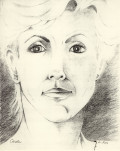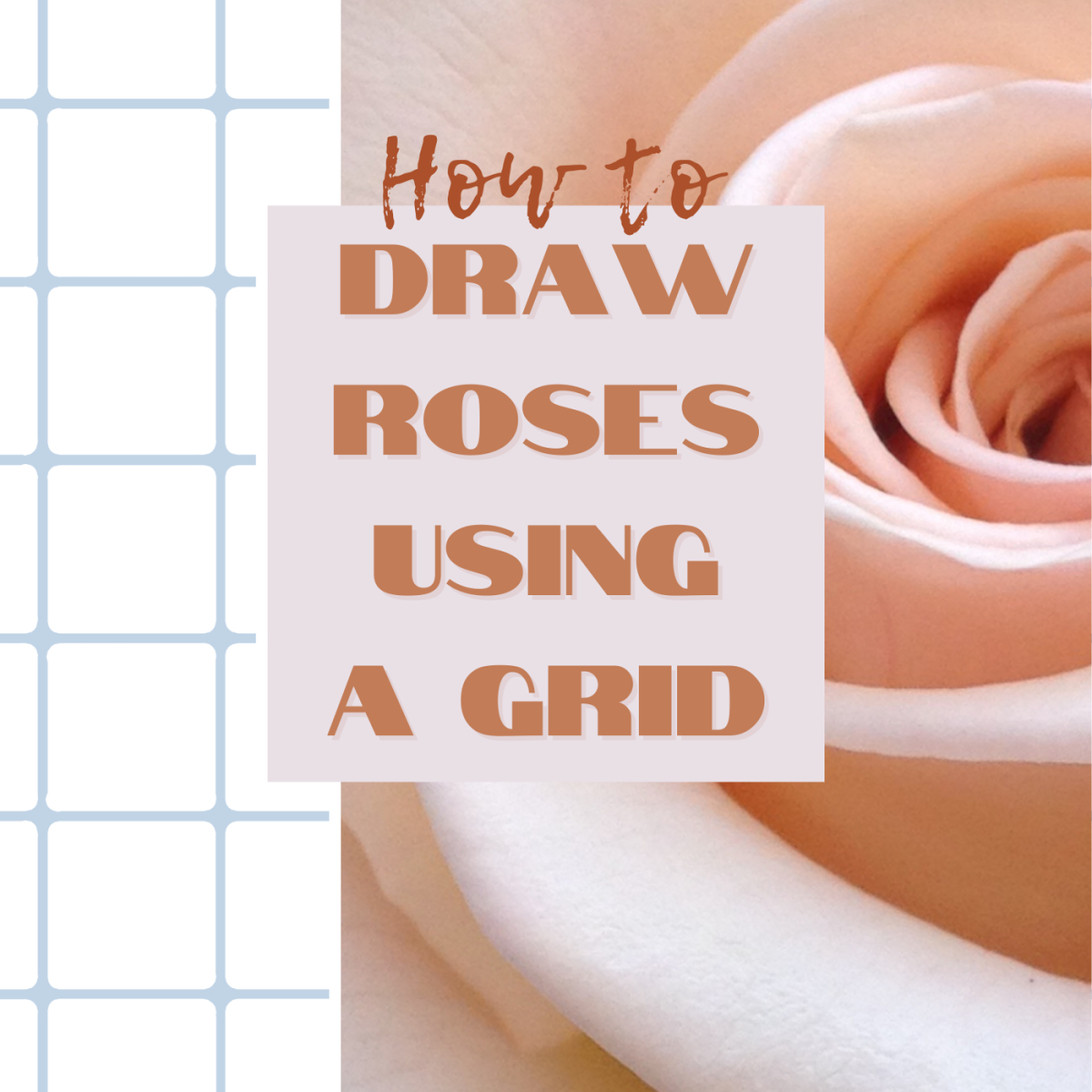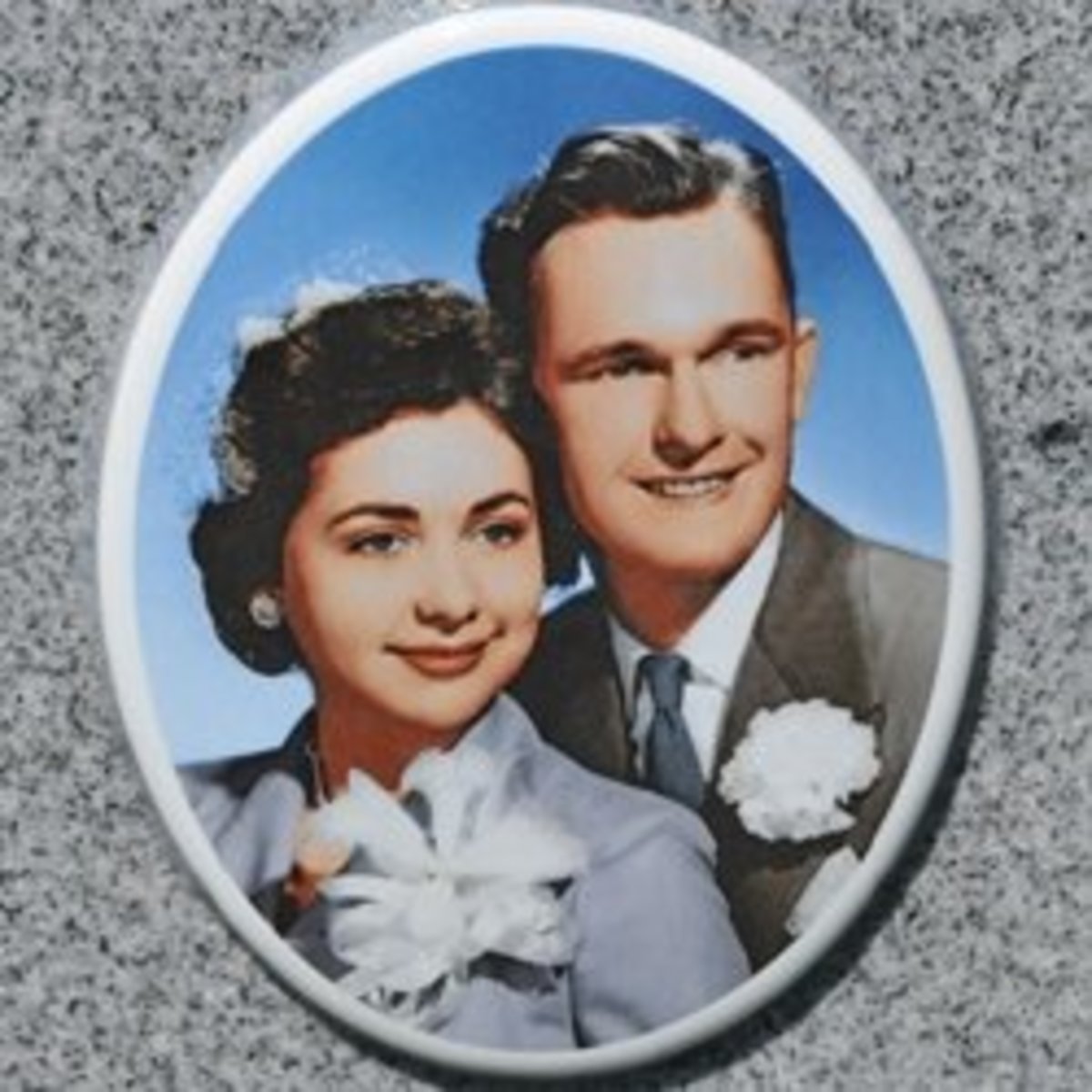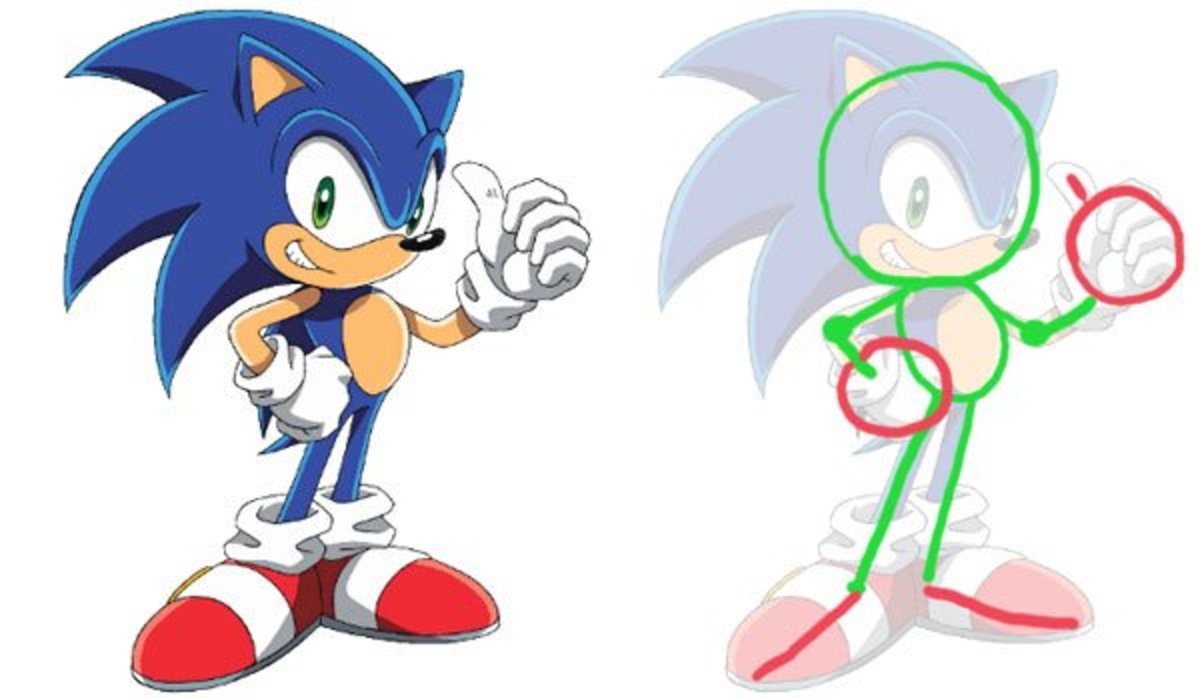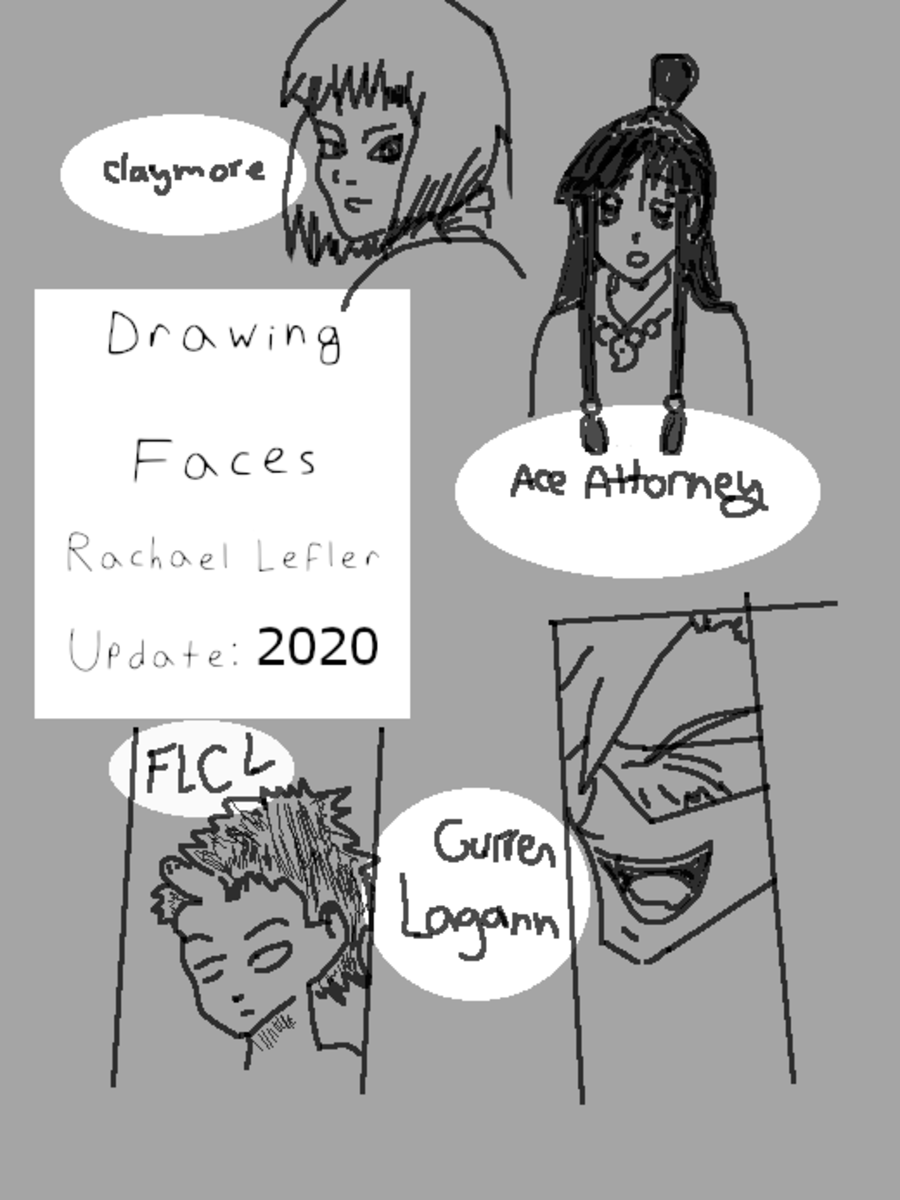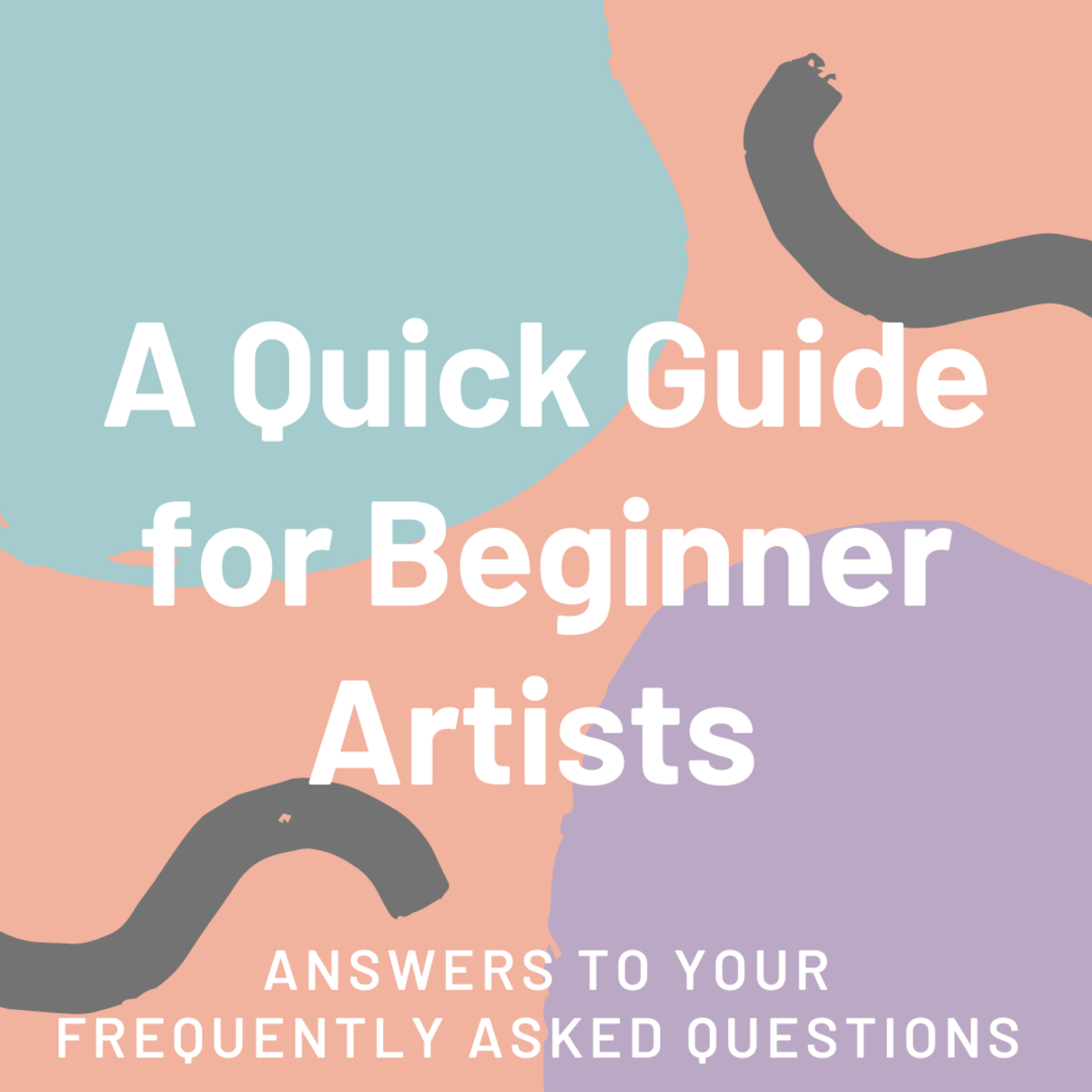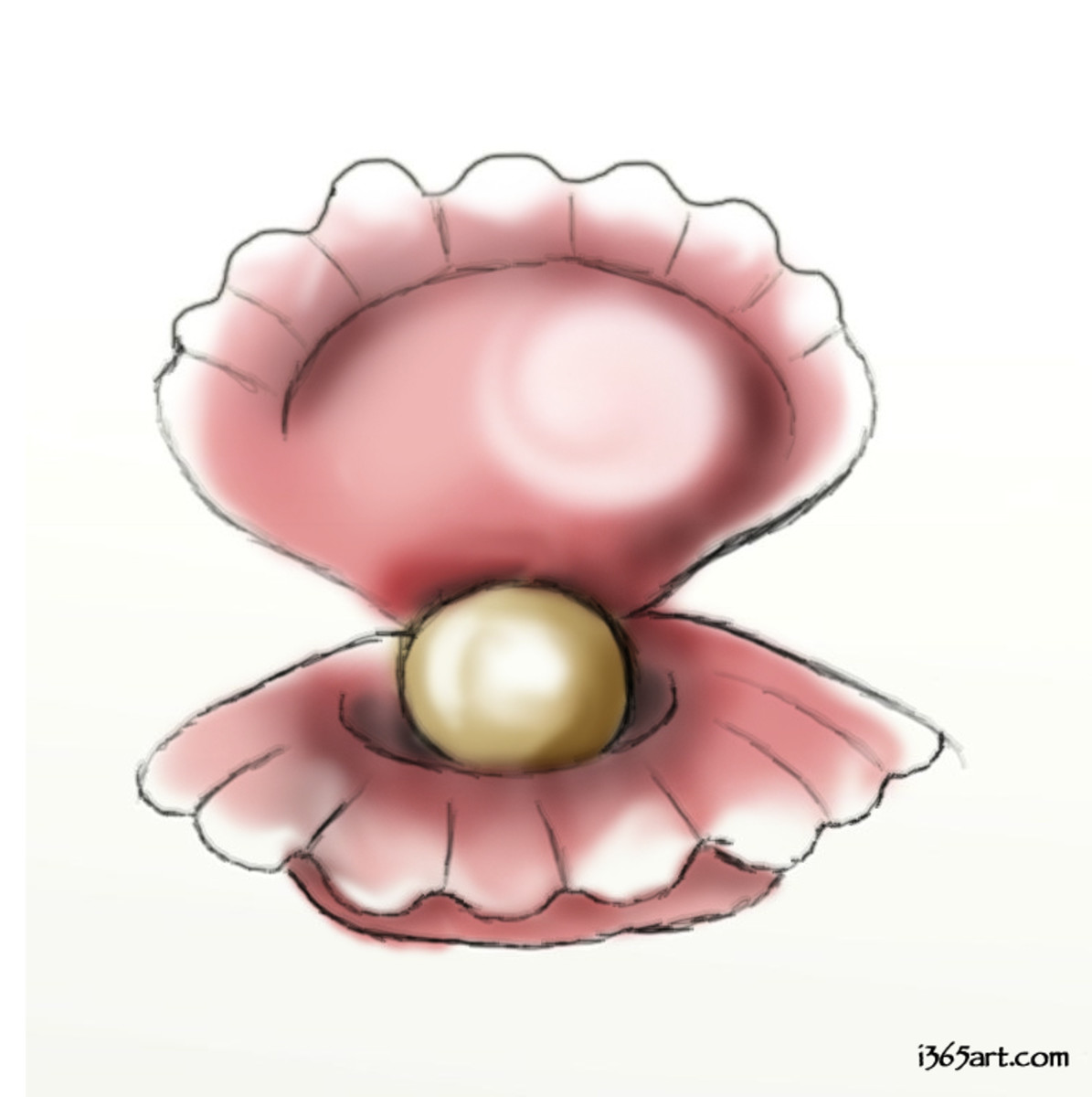How to Draw Faces That Tell a Story

Drawing faces, or maybe it's better to say portraits, is always a popular choice. Why? Because we spend time looking at people's faces anyway. For many hours each day we are looking at peoples faces to see if we know that person. We pay close attention to their facial gestures to find out what they are feeling or thinking.
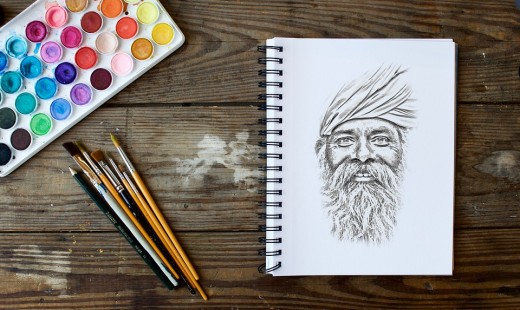
Why are Portraits Difficult?
Drawing portraits can be fun and enjoyable, but it's also a great technical challenge for the artist. For survival reasons people have specialized in noticing details and differences in faces and emotional gestures. This means that you have to be very precise and this is one of the main reasons, why drawing portraits is challenging. Most people can immediately tell if you have a correct drawing, or it doesn't look anything like the original subject.
Quick Tip
If you want to get better at drawing caricatures or quickly do a caricature for a friend from a reference photo, consider using the "Liquify" Filter in Photoshop to mess around with the proportions.
Proportions - The Essence of a Good Portrait
One of the basic skills that you would learn in Art School is drawing in proportion. Rarely the drawing is the same size as the live model. This means that most of the time you will be drawing in proportion. Even though your drawing of the Eiffel Tower may be thousands of times smaller than the actual model it will still clearly resemble the real building if you get the proportions right. Translating what you measure on the live model, to your drawing can be a little tricky at first. As you get used to measuring, it will become automatic, and you will be doing less measurements and math as your skills grow.
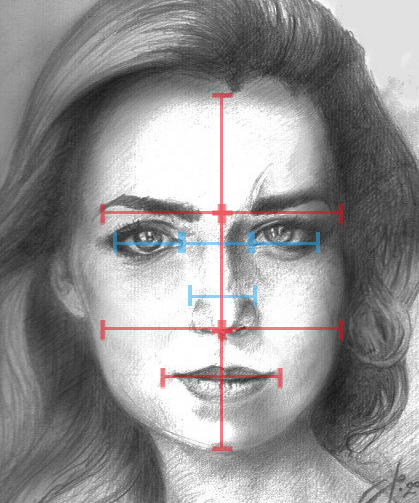
Quick Tip 2
A good way to get a consistent measure is to use the width of the eye or the length of the nose as your base unit measure. How many "nose lengths" is the face long?
Rule of Thirds, Golden Ratio and the Typical Proportions
It's good to know some rules, they can be a great guideline. Or as Picasso would say "Learn the rules like a pro, so that you can break them like an Artist". One of the most common is "the rule of thirds" which is heavily used in composition and photography. It simply means, don't look for important(focal) points in the center but rather divide the image in 3 equal parts, both horizontally and vertically.
A curious thing is that almost all faces are 3 nose lengths high.
Another "rule" is the "Golden Ratio" it's a mathematical concept that is very present in art, design, architecture, music... you get the point - everywhere. Some even call it the divine proportion and make up a conspiracy theory that God is behind it all and it's his signature(who knows, maybe they're right) . Leonardo Da Vinci used to study it in great depths, and it's very much worth exploring.
And if you study drawing books, you are likely to find diagrams of typical proportions of an average male or female, this is all great stuff, just keep in mind not to get stuck in just one model, and stay flexible. Step out of the rules a little bit if the drawing requires that. You don't want each and every drawing to look like the same person. Those small variations and irregularities in proportion are giving people character.
Aim for Likeness
You don't have to be perfectly precise. In a way that is the artistic aspect of drawing, to get a new perspective of the same subject. Photo cameras are extremely precise, but they don't have their own interpretation, and in that way they will never replace classical portrait drawings and paintings. It's okay, even advisable to add some amount of style and expression to the artwork.
If you capture the basic likeness then you have lots of artistic freedom. Pay special attention to the eyes and eyebrows, they are arguably the most distinct facial feature. The overall shape of the face is very important as well. The nose and mouth is what remains, and at all times the proper placement of each feature in relation to the other features.

Quick Tip 3 - The Grid System
Overlay a photograph with a semitransparent grid, made out of small proper squares, and it will help you have precise placement of features and shapes.
Study Anatomy, and Each Facial Feature Separately
If you want to get really good at portraits, studying facial anatomy is a must. By learning the underlying muscles and bone structure, you will very quickly understand the form on the surface. It will help you render the final image better or even draw some imaginary but convincing parts that are missing on a photo, compensate for a photo's bad quality or finish a drawing even when the live model is no longer present. These things are not always easy to do, but generally good knowledge of anatomy will help you notice faster and better.
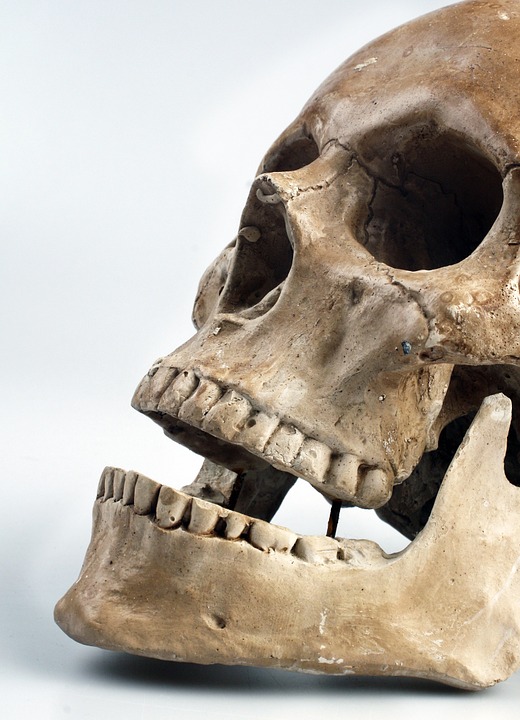
Drawing from your Imagination, Concept Art and Caricatures
Another benefit of knowing anatomy well is the freedom to draw cool images without reference. Most professional artists still use at least some reference in the final stages of a drawing or painting, but it's great to be able to quickly start, or just have fun and experiment with different variations, compositions and ideas before focusing on the final rendering.
Texture, Shading and Rendering
Most beginners mainly draw with lines not even thinking that there is something more. In the end, you will get frustrated because your drawing will lack depth. Even though you might be perfectly precise and all the features are the perfect size and placement, it still looks very artificial.
This is usually the point that makes difference between beginner and intermediate portraits - shading and rendering. If you are happy with the measurements, it's only maybe 40% of the work. You have to spend lot of time and attention to rendering how light falls on the subject to give it form. Also practice or learn from tutorials, how to render different kinds of texture. For example, the hair is messy and has volume at the same time, the skin of the face is smooth, but not wet and glossy like the eyeballs, these are all different textures. It' wise to start with simple shading exercises and work your way to more advanced and complex forms.
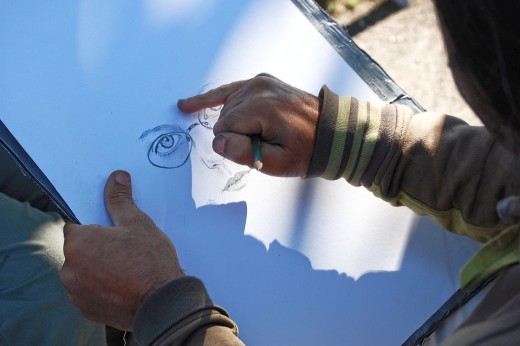
Enjoy your practice and keep pushing the limits of your technical mastery. You will be very happy to see progress and other people will be "Wow"ed by the amazingness of your drawings, all of that is such a great experience. Happy Drawing!
See also:
- Key Concepts That Will Make a Huge Difference in Your Drawings
Focus on a few important aspects of drawing, master the fundamentals, and each of your future drawings will be transformed.

